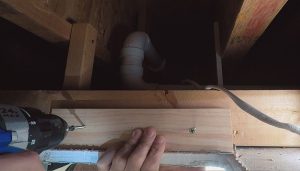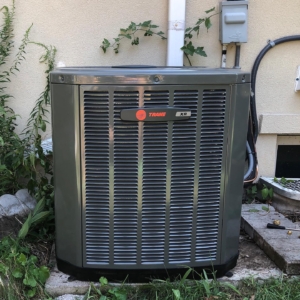Keep Your Home Safe From Dryer Vent Fires
In the U.S., there are an estimated 2,900 home dryer vent fires every year, resulting in an estimated five deaths, 100 injuries, and $35 million in property damage. These fires typically start when lint builds up in the dryer or vent hose and becomes ignited by the dryer’s heat. Fortunately, there are some simple steps you can take to help prevent a dryer fire from happening in your home. (rest of the blog post discusses tips for preventing dryer fires)
How Do Dryer Vent Fires Happen?
A dryer vent fire is a fire that is started due to lint and another material buildup in dryer vents. The heat created during the dryer’s cycle can cause the lint to ignite, leading to dangerous and damaging fires within wall spaces, dryer vents, and other dryers located near the one on fire. Improper installation of dryer vents can also contribute to dryer vent fires, which is why it’s important to have experienced professionals install and maintain your dryer. Although they may seem harmless, dryer vent fires should be taken seriously as they can spread quickly and cause serious property damage and sometimes even loss of life.
How to prevent a dryer vent fires?
Keeping your home safe from a dryer vent fire should be a priority for all homeowners. To prevent any chance of danger, there are a few simple steps you can take. Cleaning the lint trap on your dryer after every use is essential to reduce the possibility of a fire and ensure proper airflow. Make sure the hose connected to your vent isn’t clogged with any buildup, and that it is securely in place. Additionally, it’s important to pay attention to any musty smells that may be coming from your clothes as it can signal that fibrous materials are igniting within your walls or an obstruction has occurred in the line leading out of the house. If any of these signs occur, contact a dryer vent specialist immediately to inspect your ventilation and make repairs as needed. Following these safety precautions can go a long way towards keeping you and your family secure from potential harm.
Steps to take if you have a dryer vent fires
- If you suspect that a dryer vent fire has occurred, time is of the essence.
- First, you should remain calm and turn off the power to your dryer at the circuit breaker.
- Don’t attempt to extinguish the fire with water or use an extinguisher; this could cause more harm than good. Move any combustible materials away from the dryer and make sure everyone within the home is safe and out of danger.
- Call 911 and alert them to the possible danger. Should there be strong smoke in your home, avoid breathing it in as much as possible by covering your nose and mouth with a wet cloth before evacuating your building.
- In any event, a professional should be hired for any repairs or further aid.
How often should you clean your dryer vent
Cleaning your dryer vent regularly is essential to ensure it is running efficiently and to promote a safer home environment. Ideally, you should clean your dryer vent at least every six months. However, if you use the dryer frequently, such as if you are a family of four or more, then it’s best to clean the vent on a quarterly basis. Neglecting to clean the vent could lead to hazardous conditions such as fire or poor air quality in your home. To maintain optimal safety and top performance, allow an expert technician to inspect and clean the dryer vent once every one or two years for maximum protection for your household.
Tips for reducing the risk of a dryer vent fire
The risk of a dryer vent fire is a hazard that all homeowners should be aware of. Fortunately, there are steps you can take to reduce this risk and protect your home from hazardous flames. One of the best tips for reducing a dryer vent fire is to regularly clean lint from the lint filter, lint trap, vent cover and exhaust duct. This should be done after each use, as a build-up of lint and debris can cause major ventilation blockages and result in overheating and possibly even fires. Additionally, remember to routinely inspect these components for any signs of damage such as cracks or holes in the pipe or duct. If you detect any kind of damage or excessive build-up of lint or debris, it’s important to get them professionally cleaned or replaced. Also make sure that your exhaust hose isn’t longer than necessary so that it won’t accumulate too much heat during operation– otherwise it has the potential to become a fire hazard! Taking measures like these are an essential part of increasing safety in your home so be sure to follow these tips regularly.
Dryer Vent Safety – Common Questions
Where Should The Dryer Vent, Vent To?
Always ensure your dryer vent leads to the outside of your dwelling – this could be through exterior walls or the roof. Do NOT under any circumstance let the vent end in your garage.
How Long Should A Dryer Vent Be?
A dryer vent shouldn’t be longer than 35 feet. If the vent has to make a turn, for every 45 degree angle you should remove 2.5 feet from the total length, and for every 90 degree angle you should remove 5 feet from the total length.
M1502.6 Duct length.The maximum developed length of a clothes dryer exhaust duct shall not exceed 35 feet from the dryer location to the wall or roof termination. The maximum length of the duct shall be reduced 2.5 feet for each 45-degree (0.8 rad) bend, and 5 feet for each 90-degree (1.6 rad) bend. The maximum length of the exhaust duct does not include the transition duct.
What Should My Dryer Duct Be Made Out Of?
Use a strong, smooth metal duct. Connect the ducts in such a way that they go in the direction of lint travel; this will stop joints from collecting lint and protruding out of the duct.
Exhaust ducts shall be constructed of minimum 0.016-inch-thick (0.4 mm) rigid metal ducts, having smooth interior surfaces, with joints running in the direction of air flow. Exhaust ducts shall not be connected with sheet-metal screws or fastening means which extend into the duct.
Can You Use Flexible Metal Duct?
Flexible metal duct is not recommended for dryer venting. This will easily clog and need frequent cleaning.
Summary
A dryer vent fire is a serious hazard that can be easily prevented with some basic safety measures. If you suspect that your dryer vent is blocked, take steps to clean it out as soon as possible. Be sure to check the vents regularly and clear any lint or debris that has built up. Following these simple tips will help keep your home safe from a dryer vent fire. As always, if you have any questions please don’t hesitate to reach out to us. We would be happy to help clarify anything that may still be unclear.







Pingback: Dirty Dryer Vents Can Be Dangerous 2022 – GGR Home Inspections